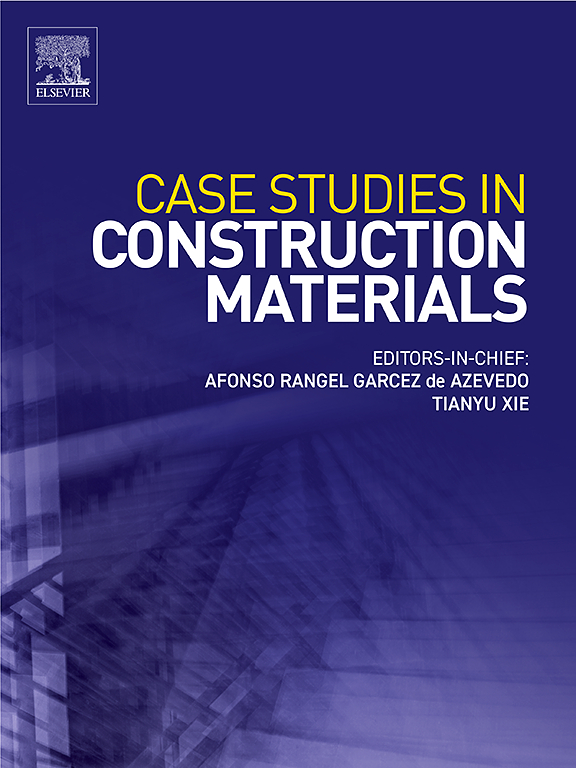Energy consumption and carbon emissions of mixing plant in asphalt pavement construction with a case study in China and reduction measures
IF 6.6
2区 工程技术
Q1 CONSTRUCTION & BUILDING TECHNOLOGY
引用次数: 0
Abstract
The asphalt pavement construction consumes a lot of energy and produces greenhouse gas emissions. The production and transportation of asphalt mixture in the mixing plant is an important process. In this paper, the energy consumption and carbon emission model in the material production and transportation stage are established. A mixing plant in Southeast China is taken as a case to analyze the energy consumption and carbon emission. The influencing factors are analyzed from three aspects: external environmental conditions, energy structure and material type. Through aggregate water content test and water loss behavior test, the influences of environmental temperature and humidity, initial and heating temperature, aggregate lithology and particle size on aggregate water content and water loss law were analyzed. The energy consumption and carbon emission under different environmental conditions were calculated. When the mixing temperature was 160°C, the energy consumption generated by water accounted for 20.23 % of the total and the CO2e percentage was 18.61 % as the aggregate water loss increased. At different initial and final temperatures, the percentage of energy consumption generated by water in the total energy consumption was in the order of basalt > reclaimed asphalt pavement (RAP) material > diabase > limestone. From the perspective of using natural gas, solar energy and hydrogen energy, the feasibility of popularizing clean energy in production and transport is analyzed. The carbon emissions of ordinary asphalt mix (AC), stone mastic asphalt mixture (SMA) and hot-mixed epoxy asphalt concrete (EA) were analyzed. The CO2e of each ton of mixture is 10.96 kg, 11.01 kg and 10.99 kg, respectively. Based on the axiomatic design theory, the emission reduction effects are analyzed from the three aspects of energy structure optimization, production technology improvement and production material selection. The promotion of solar energy in production and operation in the mixing plant, and the application of hydrogen energy in vehicles in reducing energy consumption are quantitatively analyzed. The emission reduction benefits of warm mix technology, material storage and transport technology, the selection of high-quality aggregates, and the application of RAP materials are calculated. It provides ideas for carbon reduction in asphalt pavement construction and low-carbon operation of mixing plant.
沥青路面施工中搅拌站的能耗和碳排放——以中国为例及减排措施
沥青路面建设消耗大量能源,产生大量温室气体排放。沥青混合料在搅拌站内的生产和运输是一个重要的过程。本文建立了物料生产和运输阶段的能源消耗和碳排放模型。以中国东南部某搅拌站为例,对其能耗和碳排放进行了分析。从外部环境条件、能源结构和材料类型三个方面分析了影响因素。通过骨料含水率试验和失水行为试验,分析了环境温湿度、初始温度和加热温度、骨料岩性和粒径对骨料含水率和失水规律的影响。计算了不同环境条件下的能耗和碳排放量。当混合温度为160℃时,随着总失水的增加,水产生的能耗占总能耗的20.23 %,CO2e百分比为18.61 %。在不同的初始和最终温度下,水产生的能耗占总能耗的百分比依次为玄武岩>; 再生沥青路面(RAP)材料>; 辉绿岩>; 石灰石。从利用天然气、太阳能和氢能的角度,分析了清洁能源在生产和运输中推广的可行性。对普通沥青混合料(AC)、石胶泥沥青混合料(SMA)和热拌环氧沥青混凝土(EA)的碳排放进行了分析。每吨混合物的二氧化碳当量分别为10.96 kg、11.01 kg和10.99 kg。基于公理设计理论,从优化能源结构、改进生产工艺和选择生产材料三个方面分析了节能减排效果。定量分析了太阳能在搅拌站生产经营中的推广,以及氢能在汽车上的应用在降低能耗方面的作用。对温拌技术、物料储运技术、优质骨料的选择、RAP材料的应用等方面的减排效益进行了计算。为沥青路面施工中的碳减排和搅拌站的低碳运行提供思路。
本文章由计算机程序翻译,如有差异,请以英文原文为准。
求助全文
约1分钟内获得全文
求助全文
来源期刊

Case Studies in Construction Materials
Multiple-
CiteScore
7.60
自引率
19.40%
发文量
842
审稿时长
63 days
期刊介绍:
Case Studies in Construction Materials provides a forum for the rapid publication of short, structured Case Studies on construction materials. In addition, the journal also publishes related Short Communications, Full length research article and Comprehensive review papers (by invitation).
The journal will provide an essential compendium of case studies for practicing engineers, designers, researchers and other practitioners who are interested in all aspects construction materials. The journal will publish new and novel case studies, but will also provide a forum for the publication of high quality descriptions of classic construction material problems and solutions.
 求助内容:
求助内容: 应助结果提醒方式:
应助结果提醒方式:


